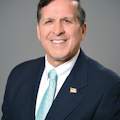Takeaways from top dental practices: It’s not about superstars
This three-part article series focuses on Levin Group’s 30-year ongoing study of the top 10% performing dental practices in production. We felt it was important to understand what makes top practices successful and distill this information into practice management categories that would allow other practices to improve performance. By analyzing the systems, methodologies, and behaviors of top 10% performing practices, we were able to identify commonalities and determine which strategic approaches would help increase production for almost any practice across the board.
As I have often joked in seminars, 90% of practices will not be in the top 10%. So, teaching practices how to be in the top 10% was never the goal of this study. Our goal was to compare practice management systems, philosophies, and principles against those of the top 10%. In doing so, we were able to identify what the majority of top 10% practices have in common, and then break them down into the practice management operations, systems, training, and other factors that contribute to these practices performing so well.
What the top 10% are not
The first and single most important objective of our study was to determine whether or not there was something special about the doctors, location, local economy, insurance profiles, patient base, or other factors that would allow the top 10% practices to reach that level in a way that was not reproducible for other practices. Although many of the doctors studied over the years reported that they felt “fortunate,” “lucky,” or “blessed” to be in the position that they were in, we found that luck had very little to do with their success.
Part 2 in this series: Takeaways from top dental practices: Strong hires, low patient attrition, controlled overhead
Part 3 in this series: Takeaways from top dental practices: A commitment to office culture and values
First and foremost, top 10% doctors aren’t superstars. If we had found early on that only dentists with special talents could move their practices into the top 10%, we would have ended the study. Remember, our goal was to determine what traits and characteristics of top 10% practices could be implemented by other practices to improve their own performance and practice production. Like every finding in the study, there were exceptions. Of course, there were dentists who were driven, charismatic, and had an amazing energy that some might say allowed them to do things that most dentists would not be able to do. Still, they represented the minority.
What we did find about most of the dentists in the top 10% was that they had a strong desire for practice improvement, a sense of persistence, and a willingness to take the necessary steps to improve. Very few of them had the specific goal of having a top 10% practice. Instead, they just continued to work on their practices, making improvements and designing the practice to reach the desired level of performance; they weren’t focused on being better than any other practice.
Finding: Top 10% doctors aren’t much different than most other doctors. They don’t tend to have superstar characteristics as much as focus, determination, and a vision.
You don’t get there quickly
Once we understood that almost any dentist could take steps to improve their practice on a consistent basis, we began working to understand what contributed to these practices being in the top 10%. Interestingly, the great majority of them did not get there overnight. In fact, the average time frame for a new practice to reach the top 10% was seven years. Some got there sooner, and for many it took longer.
There were also numerous scenarios where a practice had been performing at a certain level for 10 or even 15 years, and then the dentists decided to take the practice to the next level. And while there were some practices that quickly rose toward success, for the most part these practices grew steadily, year after year, at reasonable rates of increased production. By simply growing 10% each year, a practice will double in production every seven years. A number of these practices went through the process of doubling production several times before entering the top 10%.
It was also notable that some of these practices had years where their production dropped. This was especially evident in the Great Recession of 2008–2009 when many of the practices that are now in the top 10% actually dropped by 10% to 15%. These practices took the necessary steps to build back, and as the economy improved, they were able to increase production and reach new levels.
We did not find that there was a special “light bulb” moment where a dentist suddenly understood exactly what to do to enter the top 10% quickly. For most practices, a slow and steady progress allowed them to continue to grow and compound that growth overtime.
Finding: Top 10% practices don’t get there overnight or as the result of a single event. Most make steady progress to improve practice performance and production, which allows them to gradually enter the top 10%. It’s interesting to note that our study indicates that many of the top 10% practices have no idea where they rank relative to other top practices.
Have excellent systems
One commonality among top 10% practices was that they employ excellent business and clinical systems. Gradually we came to realize that top-performing practices were unlikely to grow to that level in chaos. Early on, these practices did not necessarily have excellent or well-designed systems. They were like other offices with moderate systems, staff training, and practice production. The difference was that they continued to work on implementing systems—sometimes on their own, more often with outside expertise—and that led to increases in practice production.
System implementation and improvement allowed top 10% performing practices to open gaps through efficiency that allowed for growth. We refer to gaps as creating potential that can be accessed to improve practice performance and increase production, moving these practices to the next level and beyond. The excellent implementation of systems such as scheduling, collections, insurance management, and case presentation allows these practices to grow on a steady basis.
Finding: Top 10% performing practices continue to improve systems on a regular basis, create excellent documentation so that the team can train and refer back to the methodology of the systems, and implement a strict set of measurements to determine if the systems are working.
Stop managing and start measuring
Another valuable finding was that top 10% dentists tended to be positive leaders. This resulted in team development where team members were responsible for their jobs, tasks, and results. However, this didn’t mean that the dentists were micromanagers. A dentist who is creating a high level of production does not have time to micromanage a team. We applied the phrase, “Stop managing and start measuring” to this group. They created the opportunity for every team member to know what they’re responsible for and assign a measurement to it.
It is easy to measure the front desk staff on things like production, collections, insurance reimbursements, and number of active patients scheduled. When team members know their measurements, especially their top three, they can then be trained and left alone to do their jobs. As one top 10% performing doctor said, “I don’t really care how they do it as long as they get the right results.” While we do not fully endorse not caring how things are done, it did work for this top 10% producing doctor.
Think of it this way: Rather than continuing to monitor how each staff member does his or her job, look to see if the results are achieved. If results are achieved, you can almost assume that systems were being followed, because without following the systems it would be difficult to produce the right result. If the result was not achieved, this will be determined in some type of regular review.
When meeting with team members who did not achieve results, top practices did not perceive it is as a negative unless it was determined that the team member was underperforming by not approaching the task properly. Most of the time it was addressed as an opportunity for discussion and coaching to help guide the team member to better performance. Certainly, there were times that achieving the result was beyond the control of the team member, but in most cases the team member simply needed to follow the systems more closely or make modifications.
Finding: Top 10% performing practices don’t micromanage. They set expectations based on achieving targeted measurements and results. If a team member falls short on a measurement, they view it as an opportunity for education and mentorship. Team members in top 10% performing practices perform at an extremely high level because of teaching and mentoring, not simply because they are gifted.
Reaching the top 10% of performing practices is not about overnight success, superstar doctors, gifted teams, or micromanagement. It’s about implementing excellent systems for the gradual development of the practice, measuring results, and mentoring.
Originally posted in 2020 and updated regularly
About the Author
Roger P. Levin, DDS, CEO and Founder of Levin Group
Roger has worked with more than 30,000 practices to increase production. A recognized expert on dental practice management and marketing, he has written 67 books and more than 4,000 articles, and regularly presents seminars in the US and around the world. To contact Dr. Levin or to join the 40,000 dental professionals who receive his Practice Production Tip of the Day, visit levingroup.com or email [email protected].

